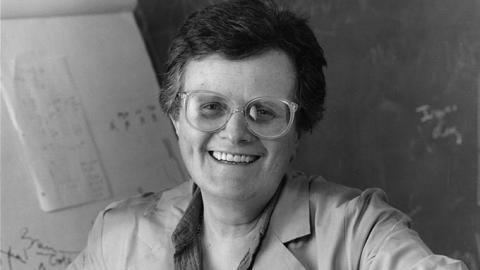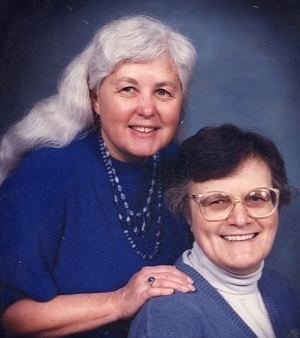Nationality American Books A Lab of My Own | Name Neena Schwartz Academic advisors Allen Lein | |
 | ||
Born December 10, 1926 (age 98) Baltimore, Maryland ( 1926-12-10 ) Known for Discovery of inhibinFeminism in scienceLGBT advocacy Alma mater | ||
Institution Northwestern University | ||
Video histories dr neena schwartz
Neena Betty Schwartz (born December 10, 1926) is an American endocrinologist and William Deering Professor of Endocrinology Emerita in the Department of Neurobiology at Northwestern University. She is best known for her work on female reproductive biology and the regulation of hormonal signaling pathways, particularly for the discovery of the signaling hormone inhibin. Schwartz has been an active feminist advocate for women in science throughout her career; she was a founding member of the Association for Women in Science organization in 1971 and shared the founding presidency with Judith Pool. She also co-founded the Women in Endocrinology group under the auspices of the Endocrine Society, served terms as the president of the Endocrine Society and the Society for the Study of Reproduction, and has been recognized for her exceptional mentorship of women scientists. In 2010, she wrote a memoir of her life in science, A Lab of My Own, in which she came out as lesbian.
Contents
- Video histories dr neena schwartz
- Early life and education
- Academic career
- Research
- Awards and honors
- Activism
- Coming out
- References

Early life and education
Schwartz was born in Baltimore, Maryland in 1926 to a family of Russian descent who she has described as politically active. She received her bachelor's degree from Goucher College (a women's college at the time) in 1948. Despite originally being interested in English and journalism, she became interested in physiology during her undergraduate studies and spent summers conducting undergraduate research with Curt Richter at Johns Hopkins University, and separately at the Jackson Laboratory in Bar Harbor, Maine.
After graduation, Schwartz began her graduate studies at Northwestern University, where she received her Ph.D. in physiology in 1953 under the supervision of Allen Lein. She was the only female Ph.D. student in the department at the time.
Academic career
In 1954 Schwartz was hired as a physiology instructor at the University of Illinois College of Medicine, which she left a year later to take a position at Michael Reese Hospital. In 1961 she returned to the University of Illinois with tenure, as the only woman in her department. She moved to her alma mater Northwestern University in 1973, becoming the chair of the biology department of the medical school a year later and serving for four years. In 1974, Schwartz organized the founding of the Program for Reproductive Research at Northwestern, which would evolve into the Center for Reproductive Science in 1987 with Schwartz as its director.
Schwartz was among the very few women who served in the 1960s on American Physiological Society program committees, was the first woman president of the Society for the Study of Reproduction from 1977–1978, and was the second woman president of the Endocrine Society from 1982–1983. Schwartz retired from her academic positions in 1999.
Research
Schwartz's research group studied the feedback mechanisms that govern hormonal signaling pathways in the female reproductive cycle, using rats as an animal model. Her work played a major role in the developing the modern understanding of the hypothalamic–pituitary–adrenal axis in endocrinology and was particularly significant in discovering the hormone inhibin.
While investigating the secretion of gonadotropins by the pituitary, Schwartz and her research group observed that then-dominant models of the reproductive cycle did not explain the observed changes in levels of luteinizing hormone and follicle-stimulating hormone in response to gonadotropin-releasing hormone. A hypothetical additional hormone given the name inhibin had been suggested years prior based on work with male animals, potentially being secreted from the testes. Schwartz's key insight was to instead investigate secretion from the ovaries in female subjects. The existence of inhibin in ovarian follicular fluid was confirmed by the Schwartz group in collaboration with Cornelia Channing in the mid 1970s. Inhibin – which plays a role in both male and female hormonal signaling – was molecularly characterized in the mid 1980s as a protein dimer. Inhibin levels have since been identified as one of several biomarkers that can be used to screen for Down syndrome in the fetus by testing a woman's blood.
Awards and honors
Schwartz received the Williams Distinguished Service Award from the Endocrine Society in 1985 and the Carl Hartman Research Award from the Society for the Study of Reproduction in 1992.
Schwartz was elected a fellow of the American Association for the Advancement of Science in 1986 and of the American Academy of Arts and Sciences in 1992. She served on the board of the American Association for the Advancement of Science from 2000–2002 and received their Mentor Award for Lifetime Achievement in 2002.
Activism
In the 1970s Schwartz became involved in the feminist movement. She was a founding member of the Association for Women in Science (AWIS) – which she recalled originating after drinks at a Federation of American Societies for Experimental Biology meeting with other women scientists frustrated with their situation. She served as founding co-president of AWIS along with Judith Pool, taking a primarily executive role while Pool worked in fundraising. Notable early achievements of AWIS, along with other women in science organizations, include initiating a class action lawsuit against the National Institutes of Health for poor representation of women on NIH grant review committees. The lawsuit was dropped after Robert Marston, then head of the NIH, met with representatives of the groups, including Schwartz, and committed to appointing more women.
In the 1970s Schwartz co-founded the Women in Endocrinology society within the Endocrine Society after discovering a lack of women's representation on the society's key organizing committees. She later served as the group's president from 1990–1992.
Schwartz was one of forty women in non-traditional professions interviewed by filmmaker and artist Michelle Citron for her 1983 film What You Take for Granted.
Coming out
Schwartz identifies as lesbian. She discovered her sexuality as a teenager in the 1940s, but kept her sexuality private during her scientific career and publicly came out in her 2010 memoir, A Lab of My Own. She began writing the book "because no one had documented the feminist movement in science" and concluded as she wrote that revealing her sexuality was necessary to telling the story. She hopes that the book will "provide young gay scientists or other professionals with a lesson of possibilities for success and happiness without such splits in their lives."
